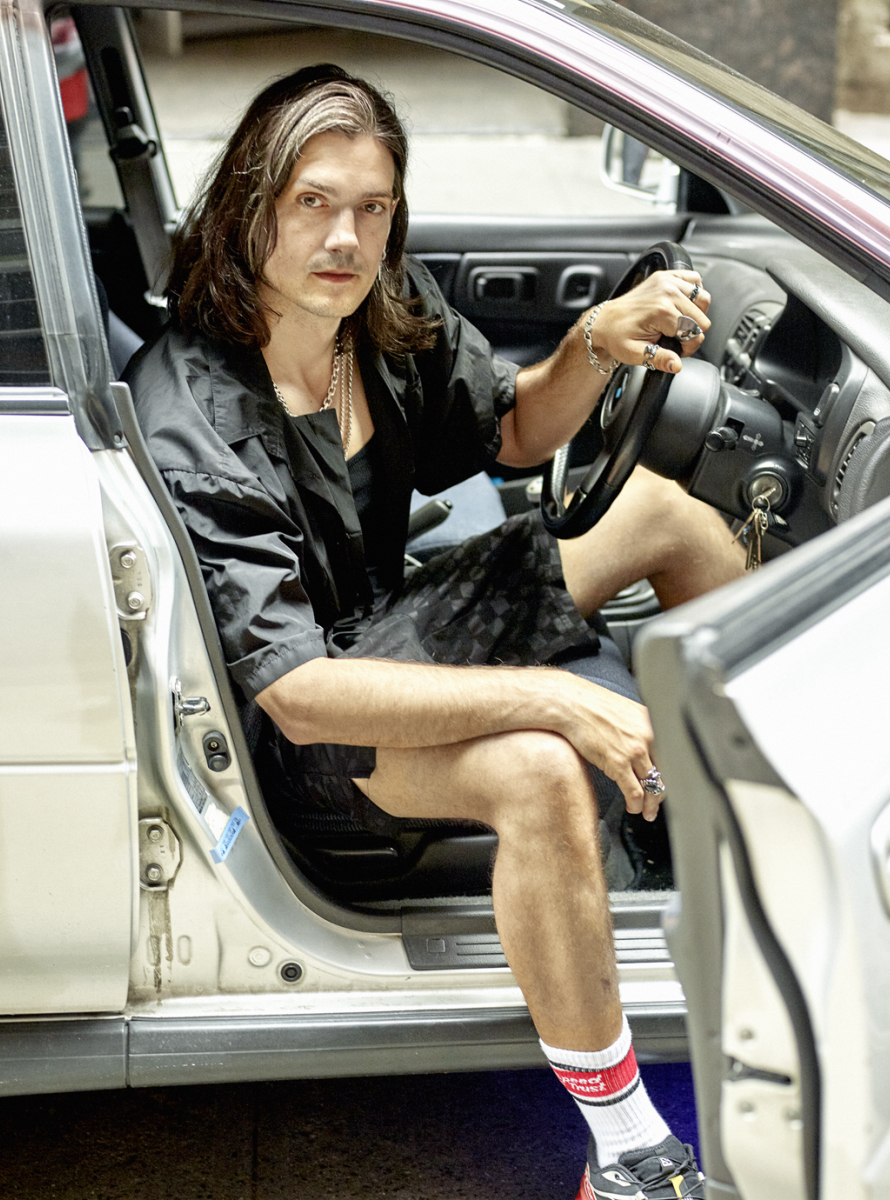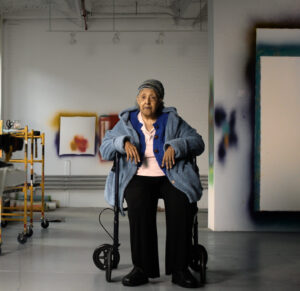Alex Gvojic once posed for Cycle Source magazine, a phase he cringes at now and keeps back on a shelf stacked high with interior-design books, Hito Steyerl missives and H.R. Giger bibles. For an outsider, the motorbike fetish follows the eloquently idiosyncratic string of interests (including Japanese cars with built in Fast & Furious DVD players, DIY computers with tiki dancers inside them and music videos) the artist is constantly adding to. He epitomizes the advanced amateur, a quality he thinks he picked up from his mother.
Gvojic’s prowess for dabbling is ultimately responsible for his expertise. If you follow art or fashion, chances are you’ve encountered Gvojic (whether you saw his time-skipping Mugler runway video with Bella Hadid and Eartheater stomping in windowed catsuits or made it to the 2018 Venice Biennale and holed up in his snug, jungle theater in the Arsenale—a cinematic collaboration with longtime creative partner Korakrit Arunanondchai). If you work in either industry, you are no doubt indebted to him. His practice is a social one that manifests in being known throughout the downtown lands as a fixer, a guardian angel, a dream-maker-come-true-er. If someone is looking for a hyper-specific effect, mood, vibe, he can divine the recipe, and gobs of ambitious special effects will be invoked for pleasure.

For Gvojic, in addition to providing the scaffolding of why, collaboration constitutes the means, payout and process. Ends like footage and sculpture are happy remains. Last week, he dropped everything and went to shoot a campaign video with Meriem Bennani for Miu Miu. “It was my first time working with Meriem,” he tells me, now recovering in New York. “It was shocking how amazing she was to work with. The thing I like about working with other people is you can embrace polar opposites, and then you have to figure out how to make it work in these situations with different personalities, styles and parameters.”
Gvojic and Bennani have a date for future filming in Morocco on the books; I envision them on a pair of motorcycles, ripping through the desert accompanied by animations sailing like Tinkerbell familiars alongside Peter Pan ambitions into the sunset. Despite being so visible to his peers, Gvojic’s relationship to the fine arts is irregular—his name often appearing on intro slides as environment designer or director of photography—but that hasn’t stopped his work from being at the center of institutional dialogue over the past decade, often in collaboration with Arunanondchai.
Together they’ve shown at almost every major global institution, including the Palais de Tokyo in France, the Ullens Center for Contemporary Art in Beijing and MoMA (not to mention all the biennials). Their latest opened only a few weeks before we spoke at the Kunsthalle in Zürich. “It was comforting to see everything turned back on,” Gvojic tells me. “I live between the ridiculousness of so many different worlds, and this was the first time that it felt like those engines were going again.” His next few days, though, will be dedicated to something more personal—a documentary of sorts he has been making on his dad, and that I’ll be waiting on the edge of my seat to see.










 in your life?
in your life?

